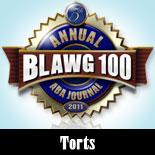Possum Law: The Case With Monumental Implications
Every now and again, some important legal news comes from our own backyard here in the Carolinas. None may be more important than the current legal battle over the New Year’s Eve “possum drop” (think Times Square, but with a possum) in Brasstown (Clay County), North Carolina. Earlier this year, People for the Ethical Treatment of Animals (PETA) filed suit seeking to have a North Carolina statute which suspends the application of wildlife protection laws to possums from December 29-January 2 each year (signed into law by Governor McCrory on June 11, 2015) declared unconstitutional. The law at issue was aimed to protect the annual Brasstown tradition of counting down the new year by lowering a live possum in a clear plastic box in front of hundreds of spectators.
The battle has been brewing since 2011 as PETA began challenging Brasstown’s use of a live possum for its signature event. A previous law authorizing the practice, which applied only to Clay County, was struck down by the court. As a result, the North Carolina Legislature took the matter statewide much to the chagrin of PETA. According to the complaint, the statute is unnecessary as previous “possum drops” have included such apparently acceptable substitutes as “a road-killed opossum (shampooed, blow-dried and frozen), a porcelain opossum figurine, an empty box decorated with photos of opossums, and a pot reportedly filled with opossum stew.”
The State moved to dismiss the lawsuit on the grounds that PETA lacked standing to challenge the constitutionality of the law. Last week, however, the Court denied the motion and set the case for a hearing on December 11th to determine whether Brasstown will be ringing in the new year with a live possum or some frozen, shampooed roadkill. Regardless of the outcome, we are certain the decision will be as influential as Marbury v. Madison. We will keep you posted in time for you to make your New Year’s Eve plans.
























